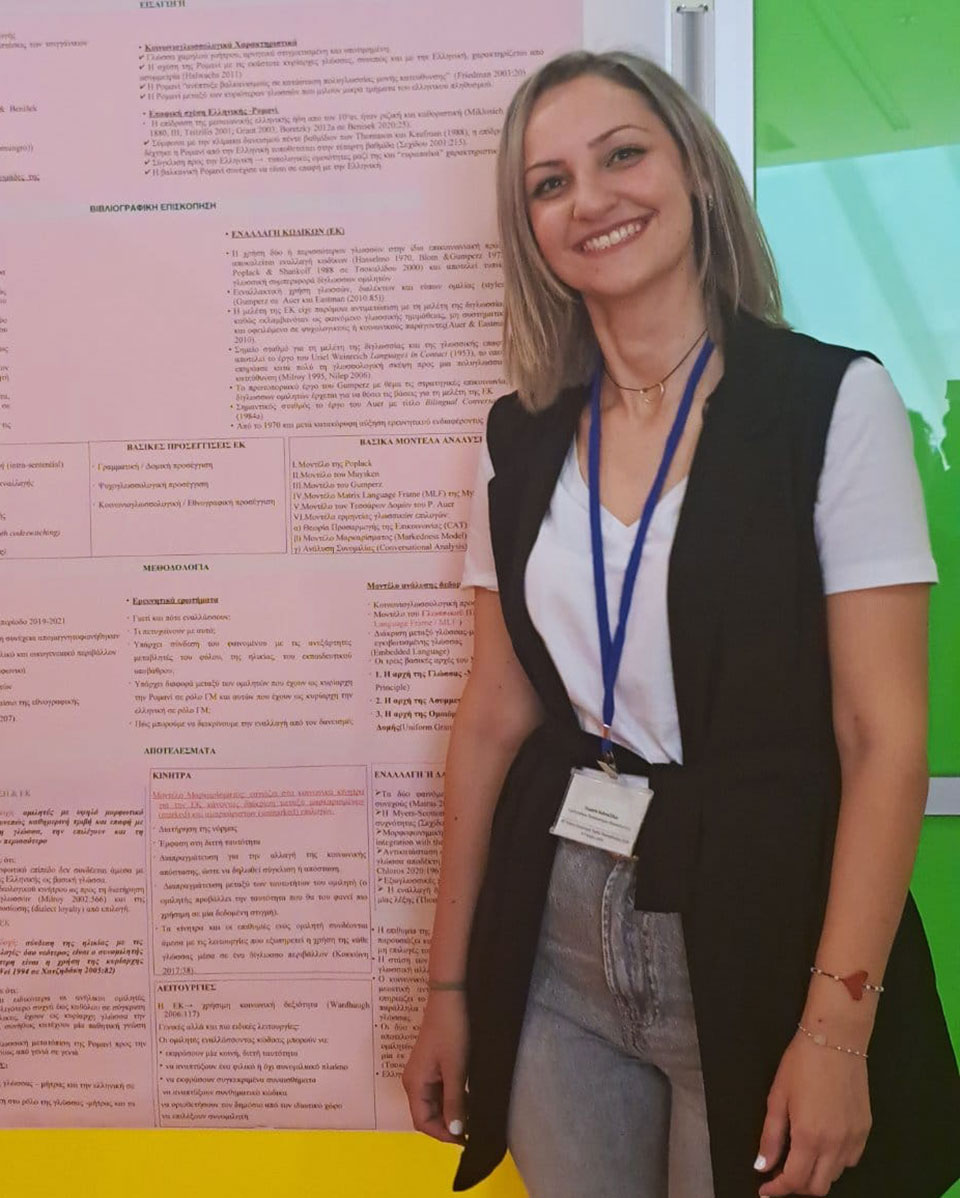
Ask more every day. The little butterfly remembered this advice from her grandmother. She read a lot, and the more she read, the more beautiful her wings became, and the longer they became, the farther she flew, and that’s how the little butterfly went around the whole world. “No, I’m not a little butterfly,” says the 33-year-old. Georgia Kalpazidou to our spontaneous question whether there are elements of autobiography in the fairy tale “Iren the Butterfly and the Magic Recipe” written by him. “These are all those who believed that knowledge opens the world, all those who, contrary to stereotypes, remained in education and followed their dream.”
Growing up, however, gypsy community from Dendropotamus in Thessaloniki, she also remembers this advice from another woman, her mother, to motivate her to read so she can spread her wings and fly far away. “He sent us to school, and in English, and constantly brought books to our home, and took us to bookstores, and we looked at them,” he remembers the conversation with “K”. The magic happened. Little Georgia not only graduated from high school, but also studied philology at AUTH, and also received a master’s degree in history and Balkan linguistics. Today, she is engaged in the education and social inclusion of marginalized Romani communities through the actions and projects of state bodies, and together with four other Romani women, they founded the city’s non-profit company REVMA (Roma Educational Vocational Maintenanceable Assistance), aiming to help the children of their old area, but also to ensure that all children believed that wherever you start, you can reach the end of the earth.
According to the General Secretariat for Social Solidarity and the Fight against Poverty, Roma population has 117,495 permanent residents, of which 14,225 live in Central Macedonia. Studies show that their participation in pre-school education does not exceed 9%, while the attendance rate for compulsory education (kindergarten, primary, secondary school) is only 66%, with a strong dropout trend after primary school.

According to Ms. Kalpazidou, school dropouts are linked to stereotypes about Roma. The stereotype that Roma children do not “have their place” in school, on the one hand, makes some families doubt getting an education, and on the other hand, encourages some teachers not to invest in students from the community. “It affects the student. If no one expects me to be good, why should I try? It’s a vicious circle.” She herself was the lucky one. She had teachers who believed in her, inspired her and gave her the push she needed to keep going. “And yet, I remember that if in the first grades of the gymnasium I had several Roma classmates, then in the first grade of the gymnasium there were only three of us, and in the third grade I was alone.”
For her parents, keeping Georgia and her two younger siblings in school was a must. Although their father had just graduated from elementary school and their mother had not even completed it, starting as a day laborer and having their first child at 14, they deeply believed that only through education could their children become financially independent, have a better life. For the community, it was like a small revolution.
Marriage at 14?
“Especially when I also reached the age … of marriage, that is, at the age of 14, that is, my mother constantly heard from others that I should get married, why does the child need letters? But our parents always told us to do what we like and make us happy. When I was 15 and she was 30, my mother took three children and took us to the beach of Thessaloniki for a walk, to events in the center, everywhere. She didn’t want her kids to just stay in the neighborhood, she wanted their horizons to open.” The plan succeeded. And sister Georgia received a master’s degree in social and solidarity economics, and their brother, after graduating from high school, took over the family business.
Unfortunately, the school dropout rate among Roma students remains high. “While there are some improvements, student drain remains a thorn in the side, especially for children living in camps,” Ms Kalpazidou says. “As you know, not all Roma live in the same conditions, there is great heterogeneity. But education is the key. Without it, it is impossible to talk about social changes, or about the improvement of conditions, or about the collapse of stereotypes. Enrollment in school is also not enough. In some cases, Roma students need special support.”
This change is also attempted through REVMA’s Last Tool, a fairy tale written by Georgia. With a little funding from the Ministry of Culture, members of the organization have managed to publish several copies that will be distributed free of charge to any school that shows interest, as well as encouraging children to ask more and more every day.
Source: Kathimerini
Ashley Bailey is a talented author and journalist known for her writing on trending topics. Currently working at 247 news reel, she brings readers fresh perspectives on current issues. With her well-researched and thought-provoking articles, she captures the zeitgeist and stays ahead of the latest trends. Ashley’s writing is a must-read for anyone interested in staying up-to-date with the latest developments.